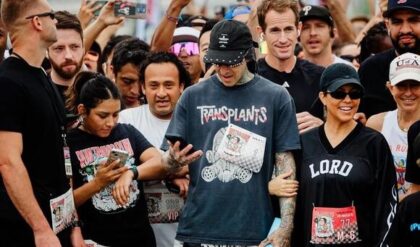
The Yankees’ projected 2025 payroll is estimated at $284 million according to FanGraphs and $282.9 million as per Spotrac. These figures highlight the financial pressures the team faces as they navigate the season’s budget and luxury tax implications.
The Yankees’ management has historically expressed a commitment to balancing competitiveness with fiscal responsibility. The hefty luxury tax penalties, combined with the team’s current payroll commitments, make additional spending highly unlikely. General Manager Brian Cashman and owner Hal Steinbrenner have emphasized the importance of sustainable team-building, which means relying more heavily on internal player development and avoiding further free-agent splurges.
Another factor is the competitive landscape within the AL East. While teams like the Rays and Orioles have built strong rosters with significantly smaller budgets, the Yankees are looking to reimagine their approach to ensure long-term success without perpetually exceeding the luxury tax threshold.
Scenarios impacting the Yankees’ payroll
 @Yankeelibrarian
@Yankeelibrarian
Scenario 1: Signing Tanner Scott only
If the Yankees add Tanner Scott for 14 million annually (seeking AAV of 15), the payroll would increase to $298 million, $57 million above the CBT threshold. The resulting luxury tax penalty at a 50% rate would be $28.5 million.
While this scenario incurs a smaller penalty than signing Bregman, it addresses bullpen needs while moderately increasing the team’s tax liability.
Scenario 2: Signing Alex Bregman only
Although rumors surrounding this scenario have cooled off, hypothetically, If the Yankees decided to sign Alex Bregman, likely commanding a salary in the range of $30-35 million annually, would significantly increase the Yankees’ payroll. If Bregman were signed for $33 million per year, the Yankees’ payroll would rise to approximately $317 million, further widening the gap above the $241 million CBT threshold. This represents a $76 million overage above the $241 million CBT threshold. At the 50% luxury tax rate, this would result in $38 million in luxury tax penalties.
While Bregman’s presence would undoubtedly bolster the Yankees’ infield and lineup, such a signing would necessitate either exceeding financial constraints or finding creative ways to offset the cost, such as shedding other high-value contracts or reworking existing deals. Balancing the immediate benefits of Bregman’s offensive and defensive skills with the long-term financial implications would be a crucial consideration for the Yankees’ front office.
Scenario 3: Signing both Alex Bregman and Tanner Scott
Should the Yankees pursue both Alex Bregman and Tanner Scott without shedding any other payroll, the financial implications would be substantial. Adding Bregman’s estimated $30 million annual salary and Scott’s $14 million salary would elevate the Yankees’ payroll to approximately $328 million. This would represent an $87 million overage above the $241 million CBT threshold. At a 50% luxury tax rate, the additional penalties would amount to approximately $43.5 million.
This combination of signings would address critical gaps in the Yankees’ roster—fortifying both the infield and bullpen—but the front office would need to weigh these benefits against the significant long-term financial strain.
Scenario 4: Shedding Marcus Stroman’s contract
One scenario being considered is the shedding of Marcus Stroman’s contract in a trade to other teams in need of starting pitching. Acquired to bolster the rotation, Stroman’s salary—reported to be around $18 million annually—represents a significant chunk of the Yankees’ payroll. Moving Stroman via trade could alleviate payroll pressures and reduce the team’s luxury tax penalties. For example, if the Yankees were to offload Stroman’s contract without retaining salary, they could save $9 million in luxury tax penalties, assuming the 50% overage rate remains constant. This move would bring the Yankees closer to the CBT threshold and provide greater financial flexibility to address midseason needs or invest in younger talent.
 Patron of the New@Insta
Patron of the New@Insta
However, shedding Stroman would not come without risks. The Yankees would need to ensure they have adequate pitching depth, as the rotation has been an area of concern in recent years. A trade might also require packaging Stroman with prospects or taking back a smaller but less impactful salary in return. Despite these challenges, such a move aligns with the Yankees’ broader strategy of achieving financial sustainability while staying competitive.
Scenario 5: Shedding Stroman and signing Tanner Scott
If the Yankees shed Stroman’s $18 million salary and add Tanner Scott for $14 million annually, the payroll would decrease by $4 million overall ($18 million saved – $14 million added). This reduction would lower the luxury tax penalties to approximately $24.5 million, assuming a remaining $49 million overage.
Adding Scott would bolster the bullpen while creating a modest financial cushion, giving the Yankees some flexibility for additional roster moves during the season.
Scenario 6: Shedding Stroman and signing Alex Bregman
If the Yankees shed Stroman’s $18 million salary and sign Alex Bregman for $30 million annually, the net payroll increase would be $12 million ($30 million added – $18 million saved). This would result in a payroll of approximately $296 million, $55 million above the CBT threshold. At a 50% luxury tax rate, this would incur an additional $27.5 million in tax penalties.
Scenario 7: Shedding Stroman and signing both Alex Bregman and Tanner Scott
In this scenario, the Yankees would shed Stroman’s $18 million salary but add Bregman ($30 million) and Scott ($14 million), resulting in a net payroll increase of $26 million ($30 million + $14 million – $18 million). The total payroll would rise to approximately $310 million, $69 million over the CBT threshold. The luxury tax penalties would then amount to $34.5 million (50% of the overage). While the financial impact would be significant, this approach would simultaneously address key roster needs by upgrading both the infield and bullpen, making it a potentially high-reward strategy
 NYP
NYP
Most likely scenario
For the Yankees, the path forward lies in optimizing the existing roster and leveraging their farm system. Players like Anthony Volpe and Jasson Domínguez represent the next generation of Yankees talent, offering high potential at a lower financial cost. The team may also focus on strategic trades that balance roster needs without significantly increasing payroll.
While some fans may be disappointed not chasing these high profile signings, the Yankees’ strategy reflects a pragmatic response to the financial realities of modern baseball. By prioritizing financial health and sustainability, the team aims to remain competitive without mortgaging its future. With that said, there is a case that the Yankees performed strongly after pivoting from losing out on the Juan Soto sweepstakes. There is a case the moves thus far this offseason have the potential to be an improvement vs 2024.
What do you think? Leave your comment below.
News
Lions GM not concerned over closed Super Bowl window despite coaching exodus
As Detroit Lions general manager Brad Holmes spoke about the playoff exit to the Washington Commanders in the divisional round of the postseason, he now speaks about the foreseeable future. After the Lions lost offensive and defensive coordinators Ben Johnson and Aaron Glenn to…
NFL Makes Huge Jared Goff Announcement After Career Season
Jared Goff and the Detroit Lions capped off the season with a 15-3 record. The Lions were one of the most dominant teams in the NFL throughout the season and entered the playoffs as the No. 1 team in the NFC standings. Despite…
A Completed Trade Between the Canadiens and Devils Just Took an Unexpected Turn
We have an interesting development following a trade between the Montreal Canadiens and the New Jersey Devils. As you know, last March, Kent Hughes traded Jake Allen for a conditional 3rd-round pick, which could become a 2nd-round pick if Allen plays more…
Jake Evans Finally Reveals His Contract Demands, and the Details Are Surprising
We have some new information regarding the much-talked-about contract situation of Montreal Canadiens forward Jake Evans. I believe everyone agrees on keeping Evans with the Canadiens, but of course, it all depends on the price. Well, we finally have news about…
St-Louis Reveals Owen Beck’s Replacement for Tonight’s Game and Makes Two Announcements
As we mentioned this morning, Montreal Canadiens head coach Martin St-Louis made the decision not to hold a morning skate. Therefore, we had to wait for the press conference of the day to find out about the lineup changes for…
Beautiful Sight Live From Canadiens Practice as Reinforcements Could Join the Lineup Soon
We have news about Emil Heineman for you, thanks to the TVA Sports network. In the last few minutes, the network shared images of Heineman, who was on the ice in Brossard. This means that, while Canadiens players are in Detroit, Heineman…
End of content
No more pages to load











